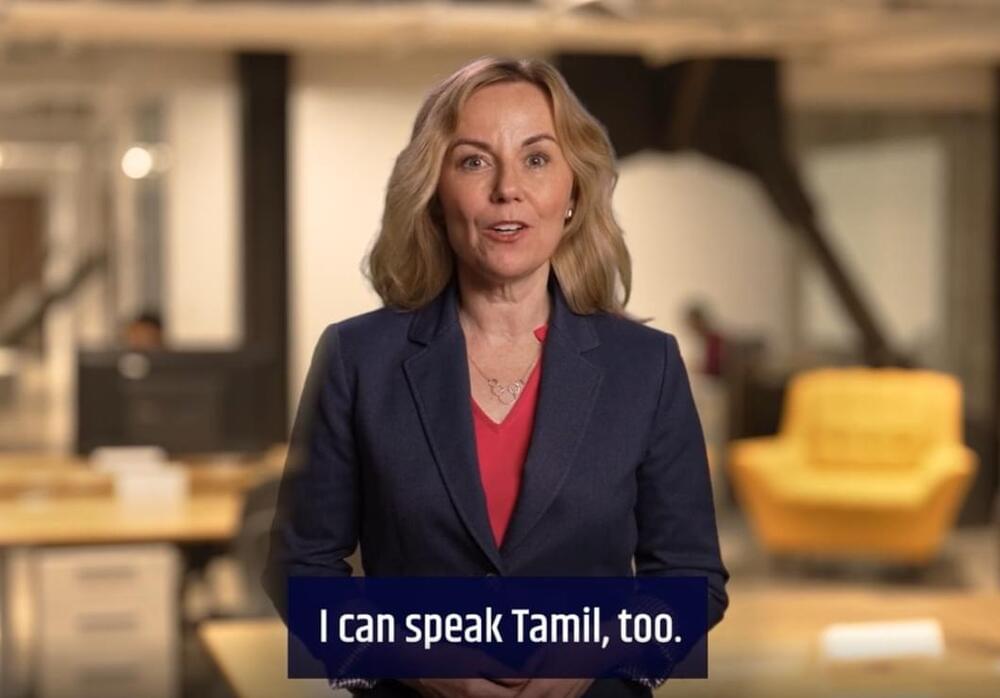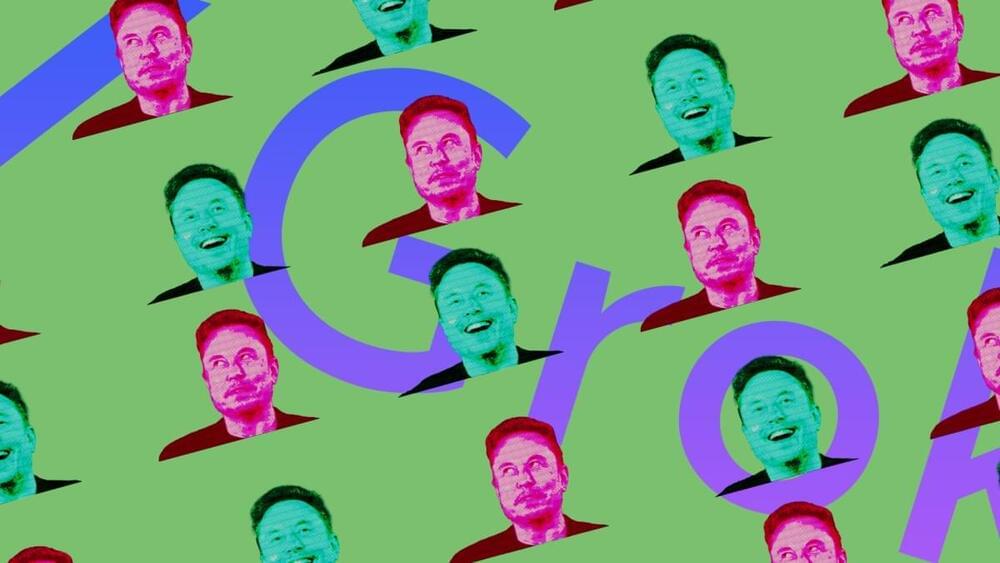Booyah, fellow interneters. In this episode Tesla Optimus gets an upgrade to generation 2. Droids get used to voice commands, robot dogs go sprinting, and of course where would we be without the neuromorphic cyborg supercomputer with human brain cells. This and more right here, right now! I’m Nick, let’s kick it!\
\
It is with the warmest feeling in our hearts that we thank you for staying with us. Your support and loyalty light up our path like Christmas lights. We also wish you ringing laughter, sincere gettogethers, warm embraces, unexpected surprises and bright, unforgettable moments. And to kick off these moments we are announcing a contest which will be held on December 26\
🎄✨ https://youtube.com/live/8rRhlyyfrSI?…\
\
0:00 beginning\
0:32 Merry Christmas\
1:24 Tesla news: new robot and Cybertruck\
4:09 The Digit robot understands humans\
5:07 The H1 humanoid robot is already on sale\
6:11 Robots work, not humans\
6:38 Four-legged robot mule\
7:39 The fastest four-legged robot\
8:34 The world’s first neuromorphic supercomputer\
9:51 Сyborg computer with a living organoid brain\
11:20 3D printing organs inside the body\
12:25 Robots conduct experiments and create medicines \
13:11 OpenAI creates a defense against superintelligent AI\
14:35 ESA’s mission to Mars\
\
🚀 Dive into the latest Tesla breakthroughs as we explore the new Optimus robot’s unique features and the eagerly awaited Cybertruck updates. Discover what sets Optimus apart from its counterparts, and join us as we analyze Morgan Stanley’s market predictions. Is it all just media hype, or is Tesla truly reshaping the future of technology? Let’s find out!\
\
Optimus Unleashed: Get the lowdown on how Tesla’s robot is becoming more human-like with improved agility, sensitivity, and design, mimicking the sleek style of a Model S.\
Cybertruck’s Debut: From its industrial aesthetics to Elon Musk’s quirky sense of humor, learn how the Cybertruck is more than just a vehicle—it’s a statement!\
Market Movements: Delve into Morgan Stanley’s explosive predictions for Tesla’s stock and discuss how AI and robotics could revolutionize the global labor market.\
Digit Speaks: Discover how the humanoid robot from Agility Robotics understands natural language, and ponder over the future of human-robot interaction.\
Unitree’s H1 Bot: A deep dive into the capabilities of this humanoid robot, set to revolutionize various industries with its advanced features and modularity.\
ANYmal in Action: Explore how this autonomous robot is taking over industrial inspections and what it means for the future of human labor.\
Barry the Robot Mule: Uncover the versatility of this pack robot and how it’s set to assist in construction, rescue missions, and more.\
Speedy HOUND: Meet the fastest four-legged robot that’s breaking records and setting new standards in robotics.\
DeepSouth — The Supercomputer: Learn about the world’s first neuromorphic supercomputer and its potential to unlock new horizons in AI.\
Ethical Tech Frontiers: From organ printing to cyborg computers, join us as we discuss the latest advancements and the ethical dilemmas they bring.\
Automating Science: Find out how XtalPi and ABB Robotics are transforming biochemistry labs with GoFa cobots.\
OpenAI’s Vigilance: Understand OpenAI’s strategy in defending against superintelligent AI threats and what it means for the future of technology.\
ESA’s Mars Mission: Gear up for the European Space Agency’s ambitious mission to Mars with the Rosalind Franklin rover and its quest to uncover signs of life.\
\
In this video, we’ll be discussing the evolution of ChatGPT to GPT5 | A new era of AI or the end of humanity? | Tech News | Pro Robots.\
\
chatGPT has long been a popular chatbot platform for businesses and organizations. Recently, the company has released a new platform called GPT5 which is claimed to be more advanced and robust than previous versions of the chatbot platform. In this video, we’ll be discussing the pros and cons of GPT5 and how it may change the future of AI. So whether you’re a robot lover or fearing for the future of humanity, be sure to check out this video and let us know what you think!\
\
#prorobots #ai #artificialintelligence #technology2021 #technologyfuture #Tesla, #OptimusRobot, #Cybertruck, #AI, #Robotics, #TechnologyUpdates
Category: humor – Page 4
This AI says it’s conscious and experts are starting to agree. w Elon Musk
Elon Musk and “conscious AI.” Please visit https://brilliant.org/digitalengine — a great place to learn about AI and STEM subjects. You can get started for free and the first 200 people will get 20% off a premium annual subscription.
Thanks to Brilliant for sponsoring this video.
I used GPT-3 and a Synthesia avatar. All answers are by GPT-3 (except the brief joke at the end).
For a deeper drive, I’d recommend the book Life 3.0, by MIT Professor Max Tegmark.
Sources.
America’s Shaky Semiconductor Supremacy Over China
Like China, the US sees AI as a key to both a military and economic power in the 21st century. Both Republicans and Democrats in DC are concerned about the rate of Chinese advancement. In fact, the running joke on Capitol Hill is that the only thing they can agree on is The Chinese Threat.
Toward this end, Congress recently passed The CHIPS Act and the Executive Branch has been implementing trade controls to deny technology that they believe are critical for developing AI in China. While this desire is rational, it is unlikely to work in the mid-to long-term, and it will only increase geopolitical tension.
The US strategy of technology relies on seven realities that, while true today, are unlikely to all be true tomorrow.
NASA sends cat video over 19 million miles using laser
In a groundbreaking experiment, NASA has successfully sent a 15-second, high-definition cat video over 19 million miles to Earth from space.
NASA has sent an ultra-high definition, 15-second-long cat video over 19 million miles (over 30 million km), the space agency said on Monday. This was not done for fun, though the video choice is undoubtedly some in-joke, but rather an experiment for its Deep Space Optical Communications. The video was beamed to Earth from its $1.2 billion Psyche asteroid probe launched in October 2023.
Cat vids over the void
The probe is on a six-year-long mission and is set to travel around 2.2 billion miles (3.6 billion km) during its mission. Pysche is scheduled to rendevous with a rare, metal-rich asteroid that may explain how the cores of rocky planets like Earth first formed. The video of a cat called “Taters” was uploaded to the probe before launch and was sent to Earth on December 11 as a side mission to its main task.


AI-generated news anchors show off superhuman abilities
There’s a new global news network launching in 2024 which completely ditches humans for AI-generated newsreaders – and they’re showing off some superhuman capabilities that make it very clear: the days of the human news presenter are numbered.
Channel 1’s photorealistic news anchors come in all shapes and sizes. They can all speak more or less any language, while evoking the stiff, formal body language familiar to anyone that still watches news on the TV. They’re even capable of making news-anchor-grade attempts at humor.
This will be a fully personalized, localized news aggregation service; Channel 1 isn’t using AI to produce its own news stories. Instead, it’ll round up human reporting by “trusted sources” around the world, then re-package it as fully narrated, hosted and edited news stories that’ll run together in a list curated to your personal topics of interest, complete with footage and images from the event, like a personal TV station.

With AI chatbots, will Elon Musk and the ultra-rich replace the masses?
Elon Musk is hyping the imminent release of his ChatGPT competitor Grok, yet another example of how his entire personality is just itself a biological LLM made by ingesting all of Reddit and 4chan. Grok already seems patterned in many ways off of the worst of Elon’s indulgences, with the sense of humor of a desperately unfunny and regressive internet troll, and biases informed by a man whose horrible, dangerous biases are fully invisible to himself.
There are all kinds of reasons to be wary of Grok, including the standard reasons to be wary of any current LLM-based AI technology, like hallucinations and inaccuracies. Layer on Elon Musk’s recent track record for disastrous social sensitivity and generally harmful approach to world-shaping issues, and we’re already looking at even more reason for concern. But the real risk probably isn’t yet so easy to grok, just because we have little understanding yet of the extent of the impact that widespread use of LLMs across our daily and online lives will have.
One key area where they’re already having and are bound to have much more of an impact is user-generated content. We’ve seen companies already deploying first-party integrations that start to embrace some of these uses, like Artifact with its AI-generated thumbnails for shared posts, and Meta adding chatbots to basically everything. Musk is debuting Grok on X as a feature reserved for Premium+ subscribers initially, with a rollout supposedly beginning this week.

GPT-4 falls short of Turing threshold
One question has relentlessly followed ChatGPT in its trajectory to superstar status in the field of artificial intelligence: Has it met the Turing test of generating output indistinguishable from human response?
Two researchers at the University of California at San Diego say it comes close, but not quite.
ChatGPT may be smart, quick and impressive. It does a good job at exhibiting apparent intelligence. It sounds humanlike in conversations with people and can even display humor, emulate the phraseology of teenagers, and pass exams for law school.

Twitter CEO Says She Wishes Elon Musk’s AI Would Talk About Sex With Her Kids
Twitter CEO Linda Yaccarino regrets that she was not able to use her boss Elon Musk’s wildly vulgar AI chatbot to teach her kids about sex. You know, regular stuff for an exec to say publicly!
To back up for a second: Grok, as the AI is called, was released this weekend to a small group of test users. Whereas other chatbots like OpenAI’s ChatGPT and Google’s Bard have been criticized by many on the right for being too liberal, Grok is specifically designed to be anti-“woke,” like a seasoned Twitter troll; it has the humor of a 13-year-old boy, and yet somehow a 53-year-old man. Unsurprisingly, the limited users with access quickly took to X-formerly-Twitter to share the AI’s sometimes tame-ish, sometimes deranged outputs with their followers.
One of those posts, shared to X on Tuesday by Babylon Bee staffer Ashley St. Clair and reshared by Musk, featured Grok’s response to the question of how babies are made.

We all play don’t die every day — now let’s get really, really good at it
Bryan Johnson is the world’s most famous biohacker – and perhaps the “most measured man in human history”. He’s on a mission to maximally reverse the quantified biological age of each of his 70 organs, extending his lifespan and healthspan, and then roll out his protocol on a platform to ensure others can benefit from his experience, research and experimentation.
Johnson’s ethos can be summed up pretty neatly as don’t die, and to that end, he has written a book, or novel, to be more accurate, entitled Don’t Die, the uncorrected advanced reading version of which is downloadable as a free ebook from his website. Johnson’s nom de plume for this venture is Zero, described in the book as the “first individual H. sapiens to surpass five hundred years of age,” who dies in 2,478 (in an accident, rather than from old age), just weeks away from “becoming Homo Deus.” Johnson credits Zero with the invention of Zeroism and the resurrection technology undie, as well as the fathering of “millions of biological and digital offspring who now live in the far reaches of the solar system and beyond”
Longevity. Technology: Because Don’t Die is a novel, Johnson can explore his philosophy in a different way, inviting us to observe the narrator, Scribe, on his last day on Earth, as he muses on humanity’s future evolution, the nature of death and free will and the impact of age reversal and programmable biology. Scribe is joined by a Pilgrim’s Progress-like cast of characters, including Cognitive Bias, Dark Humor and Game Play and Self Critical.